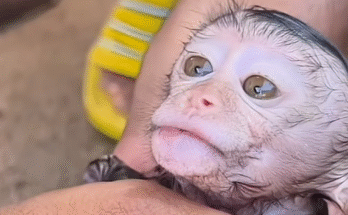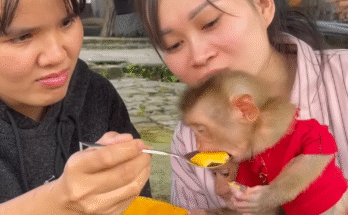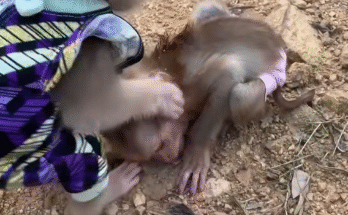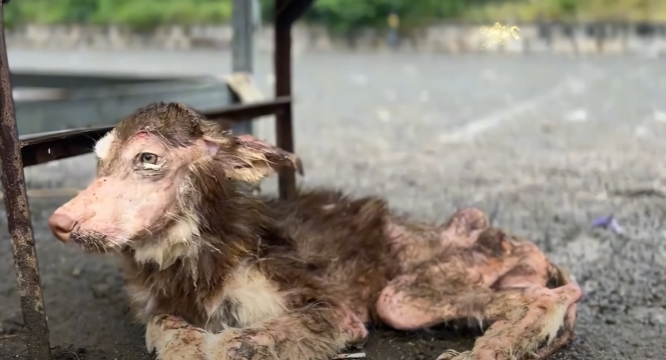
The Alaskan wilderness is known for its beauty — endless snow fields, towering mountains, and skies painted with the glow of the aurora. But beneath its breathtaking silence lies another truth: it is also one of the harshest, loneliest places on Earth. For Eli Turner, that loneliness wasn’t just part of the landscape — it was his life.
Years ago, he had been left behind — abandoned by a group of prospectors after their expedition went wrong. He wasn’t supposed to survive the first winter. Yet somehow, years later, people would call his story a miracle of life, a testament to the strength of human will.
This is how he did it.
🌨️ Left Behind in the Frozen Wild
It started in late October, when snowstorms in northern Alaska came earlier than expected. Eli had joined a small team of prospectors searching for mineral veins deep in the Brooks Range. They were days away from civilization when disaster struck — their supplies ran low, communication equipment failed, and one morning, Eli woke to find the camp empty.
The others had taken the last working snowmobile and fled south, leaving behind what they thought was a lifeless man. Eli had been sick with fever, barely breathing, and they assumed he wouldn’t make it.
When he awoke alone, the world around him was white and silent. The fire was dead. The tents were torn by the wind. His fingers were numb. He understood immediately — he had been left to die.
But something inside him refused.
“I’m not done yet,” he whispered to himself through chattering teeth.
🏔️ The Struggle to Survive
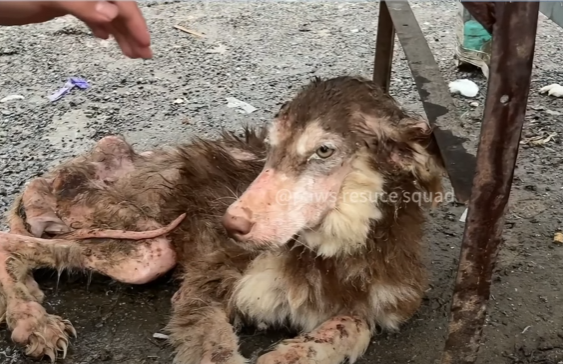
At first, survival was nothing more than instinct — the primal drive that keeps a creature alive. Eli scavenged what was left in the camp: a broken axe, a pot, two cans of beans, and a lighter that barely sparked. He knew these were his lifelines.
He built a rough shelter out of snow and branches, layering animal hides from past hunts against the cold. The temperature dropped to -30°C that night. The wind howled like a living thing, shaking his fragile hut. Every breath turned to ice.
He rationed his food — a spoonful of beans, a handful of snow to melt for water. Hunger gnawed at him constantly. His fingers bled from the cold. His face cracked open from frostbite.
But he didn’t give up.
Each morning, he forced himself to move, to hunt, to do something. He made crude traps for rabbits using bits of wire and twine. Days passed before he caught anything, but when he did — a single rabbit, small but alive — it felt like victory itself.
He thanked it quietly before cooking it over a weak fire. The meat gave him warmth, and warmth gave him hope.
🔥 A Battle Between Life and Nature
Weeks turned into months. The snow thickened. The sun barely rose above the horizon. Eli learned to read the land — to tell where foxes might burrow, where wolves roamed, where the ice was too thin to cross.
His isolation began to wear on him. The silence became heavy, pressing into his thoughts. Some nights, he heard voices — echoes of his past companions, laughter, the sound of footsteps that weren’t there.
But through it all, he found purpose.
“I’ll live,” he said aloud to the wind one night. “Even if no one ever finds me — I’ll live.”
That promise became his strength.
He began carving tools from bone, stitching clothing from animal hides, building stronger shelters. He made snowshoes out of willow branches and rope. Slowly, he began to thrive in the very wilderness that was meant to kill him.
Nature stopped being his enemy and became his teacher.
🐺 The Day of the Wolves
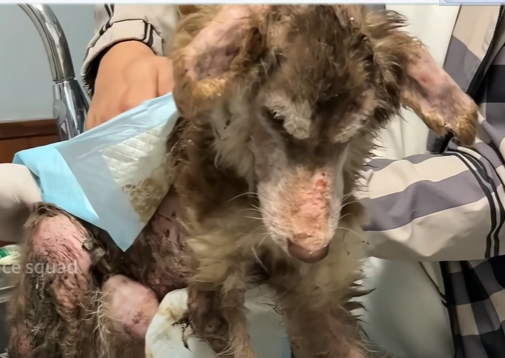
The most terrifying night came in late January. A pack of wolves had been following the scent of his traps for days. He could hear them at night — low growls in the dark, eyes gleaming at the edge of the firelight.
One morning, when he stepped out to check his traps, he saw them: four wolves circling his shelter. Their ribs showed through their fur — hungry, desperate.
He grabbed the axe and stood his ground. His heart pounded so hard he could feel it in his ears. When the first wolf lunged, he swung — the sound echoed through the frozen valley. The others hesitated. For a tense moment, man and beasts faced each other in the falling snow.
Finally, they turned and fled.
Eli fell to his knees, shaking. He had survived again — not just the cold this time, but death itself. He built a stronger perimeter around his shelter after that, using branches, bones, and anything sharp he could find.
From that day on, he carried a quiet pride inside him — the pride of someone who had faced fear and refused to surrender.
🌱 The Miracle of Life
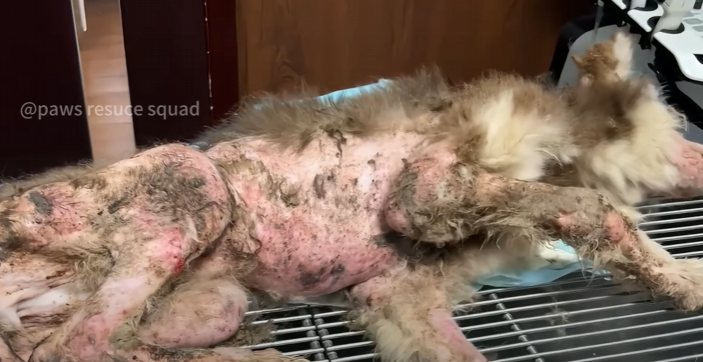
Spring in Alaska comes quietly. Snow melts in slow rivulets, and patches of green begin to peek through the white. By then, Eli had been alone for nearly six months. His beard was thick and silvered with frost. His hands were scarred, his clothes patched a dozen times over.
And yet, something extraordinary had happened — life had returned.
One morning, he discovered a fox den near a cluster of rocks. Inside were three tiny kits, their eyes still closed. The mother had been killed, likely by a predator.
He should have left them — nature’s way, he told himself. But when one of the kits tried to crawl weakly toward him, squeaking for warmth, something in his chest broke open.
He gathered them gently in his jacket and brought them back to his shelter. He fed them scraps of meat and kept them close by the fire. Over time, the kits grew stronger, playful, alive. They followed him everywhere, their tiny footprints trailing his in the snow.
For the first time in months, Eli laughed.
He had saved life — in a place where everything had tried to take his.
It was a small miracle, but it became his reason to keep going.
✉️ Found at Last
When spring turned to summer, a search team finally reached the area. The prospectors who had abandoned Eli had confessed, wracked with guilt, that they’d left a man behind.
The rescue helicopter found smoke rising from a small valley. When the team landed, they expected to find a body. Instead, they found Eli — lean, rugged, smiling — standing beside his handmade hut, three grown foxes playing nearby.
One rescuer later said, “He didn’t look like a man who’d been left to die. He looked like someone who had found a new way to live.”
They brought him back to civilization, but Eli never truly left the wilderness behind. When asked how he survived, he simply said:
“When the world gave up on me, I decided not to give up on myself. That’s where miracles begin.”
🌄 Legacy of Strength
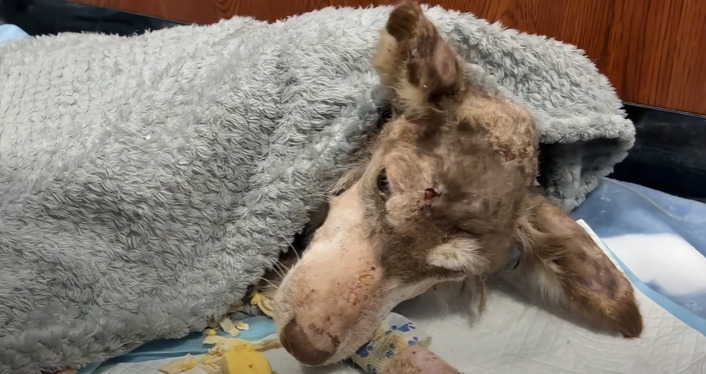
Eli became something of a legend in Alaska. Journalists called him The Man Who Refused to Die. Environmentalists admired how he had lived in harmony with nature. Survival experts studied his shelter designs and hunting techniques.
But for Eli, it was never about fame or proving anything. It was about life itself — the fragile, stubborn spark that refuses to go out, even when surrounded by darkness.
He returned often to the valley where he’d nearly perished. The foxes still lived there — their descendants now wild and free. He’d leave food for them and sit quietly, listening to the wind.
Every time he saw one dart through the snow, he smiled. Because in those animals, he saw the proof of what he’d done — not just surviving, but creating life in a place where everything else had died.
🌌 The Miracle Within
People often call Eli’s story a miracle. But he disagreed.
“It wasn’t a miracle,” he once said in an interview. “It was willpower. The will to breathe, to move, to keep going when everything tells you to stop. That’s what makes life so beautiful — we fight for it, even when we shouldn’t be able to.”
In the endless white silence of Alaska, one man’s determination had turned despair into hope — and wilderness into home.
Through sheer willpower, an abandoned Alaskan didn’t just survive — he gave life back to the frozen world around him. ❄️💙
